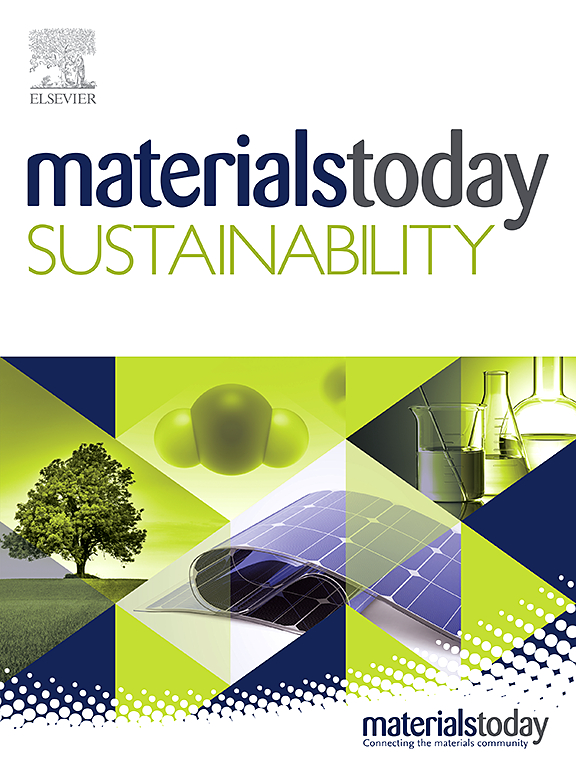基于 MoS2 的新型异质结是一种用于降解双氯芬酸钠的高效、可磁化的压电光催化剂
IF 7.1
3区 材料科学
Q1 GREEN & SUSTAINABLE SCIENCE & TECHNOLOGY
引用次数: 0
摘要
设计一种在温和的机械搅拌条件下而不是在超声波照射下具有优异性能的压电光催化剂是一项具有挑战性和意义的任务。本文提出了一种液压驱动的压光催化过程,使用基于 MoS2 的异质结作为催化剂来降解双氯芬酸钠(DCF)。研究人员设计了一种可磁化的 MoS2/TiO2/Fe3O4 复合材料,并通过简单的一步溶热法成功制备了该材料。在各种异质结复合材料和纯 MoS2 中,三元复合材料 MoS2/TiO2/Fe3O4 的压光催化能力最强,其 DCF 降解效率为 99.6%,伪一阶速率常数为 0.733 min-1。此外,MoS2/TiO2/Fe3O4 对 DCF 的降解效率在 5 次循环后的 6 分钟内仍高达 85.2%。三元复合材料很容易用磁铁收集和分离。DCF 降解有一个最佳水力梯度值(0.45 s-1)。-在水力驱动的压电光催化过程中,-OH 在 DCF 降解过程中发挥了主要作用。在实际的水介质中,DCF 的降解效果令人满意。结果验证了压电和光催化过程之间存在协同效应。因此,水力驱动压电光催化是一种高效、可持续和节能的水处理工艺。本文章由计算机程序翻译,如有差异,请以英文原文为准。
Novel MoS2-based heterojunction as an efficient and magnetically retrievable piezo-photocatalyst for diclofenac sodium degradation
It is a challenging and meaningful task to design a piezo-photocatalyst with excellent performance under mild mechanical stirring conditions rather than ultrasonic irradiation. Herein, a hydraulic-driven piezo-photocatalytic process was proposed, using MoS2-based heterojunction as catalysts for diclofenac sodium (DCF) degradation. A magnetically retrievable MoS2/TiO2/Fe3O4 composite was designed and successfully prepared by a facile one-step solvothermal process. Among various heterojunction composites and pure MoS2, the ternary composite MoS2/TiO2/Fe3O4 exhibited the strongest piezo-photocatalysis capability, with a DCF degradation efficiency of 99.6% and a pseudo-first-order rate constant of 0.733 min−1. Additionally, the degradation efficiency of DCF was still up to 85.2% in 6 min after 5 cycles by MoS2/TiO2/Fe3O4. The ternary composite can be easily collected and separated using a magnet. There was an optimum hydraulic gradient value (0.45 s−1) for DCF degradation. •OH played a major role in DCF degradation during the hydraulic-driven piezo-photocatalytic process. A satisfactory DCF degradation was found in the actual water media. The results verify the existence of a synergetic effect between piezo and photocatalytic processes. Thereupon, the hydraulic-driven piezo-photocatalysis can be an efficient, sustainable, and energy-saving process for water treatment.
求助全文
通过发布文献求助,成功后即可免费获取论文全文。
去求助
来源期刊

Materials Today Sustainability
Multiple-
CiteScore
5.80
自引率
6.40%
发文量
174
审稿时长
32 days
期刊介绍:
Materials Today Sustainability is a multi-disciplinary journal covering all aspects of sustainability through materials science.
With a rapidly increasing population with growing demands, materials science has emerged as a critical discipline toward protecting of the environment and ensuring the long term survival of future generations.
 求助内容:
求助内容: 应助结果提醒方式:
应助结果提醒方式:


